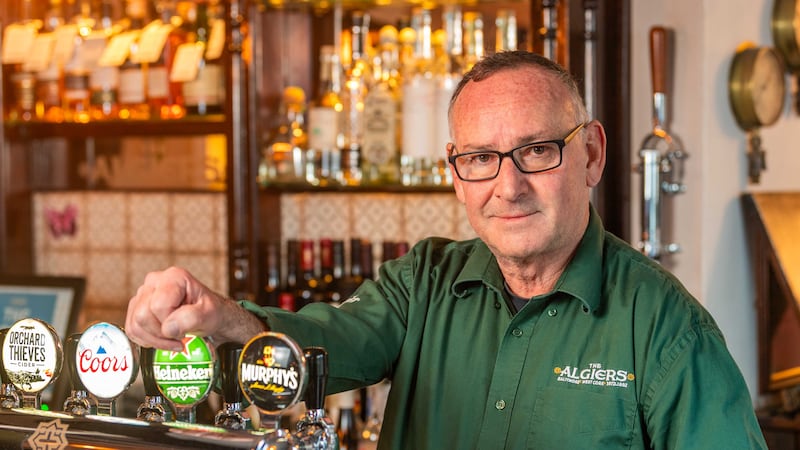When asked recently about the new marine national park in Kerry, science writer Olive Heffernan, author of The High Seas: Ambition, Power and Greed on the Unclaimed Ocean, said there is no point in setting up protected areas without consulting locals.
“There has to be buy-in from them,” she told RTÉ's Countrywide radio show. “If you look anywhere in the world where this has worked successfully it has involved the local communities and facilitating them. And in many cases they have actually profited from it.”
You’d imagine it would be impossible for people working in the fishing industry not to be consulted about something as significant as the designation of Ireland’s first marine national park, especially in Kerry where, as one local said to me last week, “there’s no such thing as a secret”. But it seems this is what happened when the Government announced in April the establishment of Páirc Náisiúnta na Mara, Ciarraí. For the fishers it came as a complete surprise.
The new park is a collection of legally-protected sites under a “national park” name. On land it includes the Conor Pass, the Owenmore river catchment and the sand dunes at Inch Peninsula. At sea it consists of the Kerry Head shoals, a deep limestone reef north of Tralee Bay; the waters around the Blasket Islands, one of the last strongholds of the endangered bottom-dwelling angel shark and the near-extinct white skate; and the Skelligs, home to 20,000 breeding birds, including storm petrel, manx shearwater and puffin.
This ‘Irish Whale’ has been spotted off Donegal and the coast of North America
Let’s be ambitious for a plan to establish a real record of the majestic Shannon’s condition
An extraordinary find in the Irish Sea left experts gobsmacked
The golden plover’s numbers in Ireland have dwindled to a few isolated strongholds
But the park is also where fishermen and women work. The inshore sector operates within a few miles of the coast in boats up to 12m in length, which go out without towed gear. The sector has had a hellish few years, with significant disruptions to lobster and crab markets from Brexit, the pandemic and the Ukraine war. The surprise news of the new park has left concerns about the impact on their livelihoods. Behind the scenes the authorities assured them that nothing would change after the park was created, and there would be no additional regulatory restrictions on activities.
But if this is the case what on Earth is the point of it?
Ireland’s national parks are supposed to be managed according to criteria laid down by the International Union for Conservation of Nature, whose definition of a “protected area” is “a clearly defined geographical space, recognised, dedicated and managed, through legal or other effective means, to achieve the long-term conservation of nature with associated ecosystem services and cultural values”.
Whatever name is given to these areas (parks, no-take zones, reserves, conservation zones, sanctuaries), they involve limiting human activity to protect nature. However this is done – by regulating activities by area or time of year, or prohibiting them – the outcome is the same: nature must benefit. For this to happen human lives must be enhanced, too.
The Irish Government committed to expanding protected marine areas from 2.1 per cent in 2019 to 30 per cent by 2030. We are currently at just under 10 per cent, but percentages and lines on a map are irrelevant without plans that are implemented, enforced and financed. (According to the NGO Fair Seas, effectively protecting our designated areas will cost €55 million until 2030.) If sites aren’t actively managed the designation process is meaningless. But we still don’t even have legal definitions for “marine protected area” or “national park”.
There are many ways to manage protected marine areas that don’t involve blanket bans on human activity. “Multiple-use” areas allow certain forms of fisheries, and recent research shows that they can provide a viable and equitable pathway for local communities when well designed and managed.
If the new national park is to mean anything then the sectors who use the area to generate income – including offshore energy, tourism and recreation as well as fishing – will have to shift how they operate. To believe otherwise is fantastical.
Bottom trawling, where weighted nets are pulled along the ocean floor, is highly effective at catching fish but it wrecks the seabed, depletes the waters of life and releases as much planet-warming carbon-dioxide into the air as global aviation. According to the Marine Conservation Society, between 2015 and 2023 more than 19,000 hours of bottom-towed fishing took place in protected marine sites around Ireland, mainly by French and Irish fleets. It is of utmost urgency that this stops.
[ The Irish Times view on the new national park: marine in name onlyOpens in new window ]
In 2009 Sweden created its first marine park with the establishment of Kosterhavet on the western coast. It’s the most species-rich marine environment in the country, with 6,000 marine species. A management plan with stated goals was published within five months of establishing the park. Local communities contributed their thoughts and ideas. Recreational activities are permitted but regulated; for example, there’s a speed limit on boats. Fishing is allowed but bottom trawling is not. The park is continuously monitored and the management plan changes if objectives are unmet.
Within a few years by working with fishermen and women, an actively-managed marine park in Kerry could become one of the world’s most spectacular sites, like the Galapagos Islands, where near-extinct species thrive. Instead of swamping the area with people it could become an example of a new, sustainable model of tourism and recreation. It has the potential to be a zone of hope where younger generations can feel optimistic about the future.
The park could herald the redefinition of what it means to be a fisherman beyond solely catching and selling fish. On land public money is given to farmers who enhance nature. At sea we have inshore fishermen and women whose expertise, experience and equipment could be harnessed to become stewards of these biodiverse areas. This is already happening in Tralee Bay, where oyster fishers are leading the way.
From the outset the inshore sector must feel confident that conservation goals will enhance, not diminish, their income and livelihoods. The prize on offer should galvanise us all, but the sooner the conversation engages everyone – not just “them up there in Dublin” – the better.















